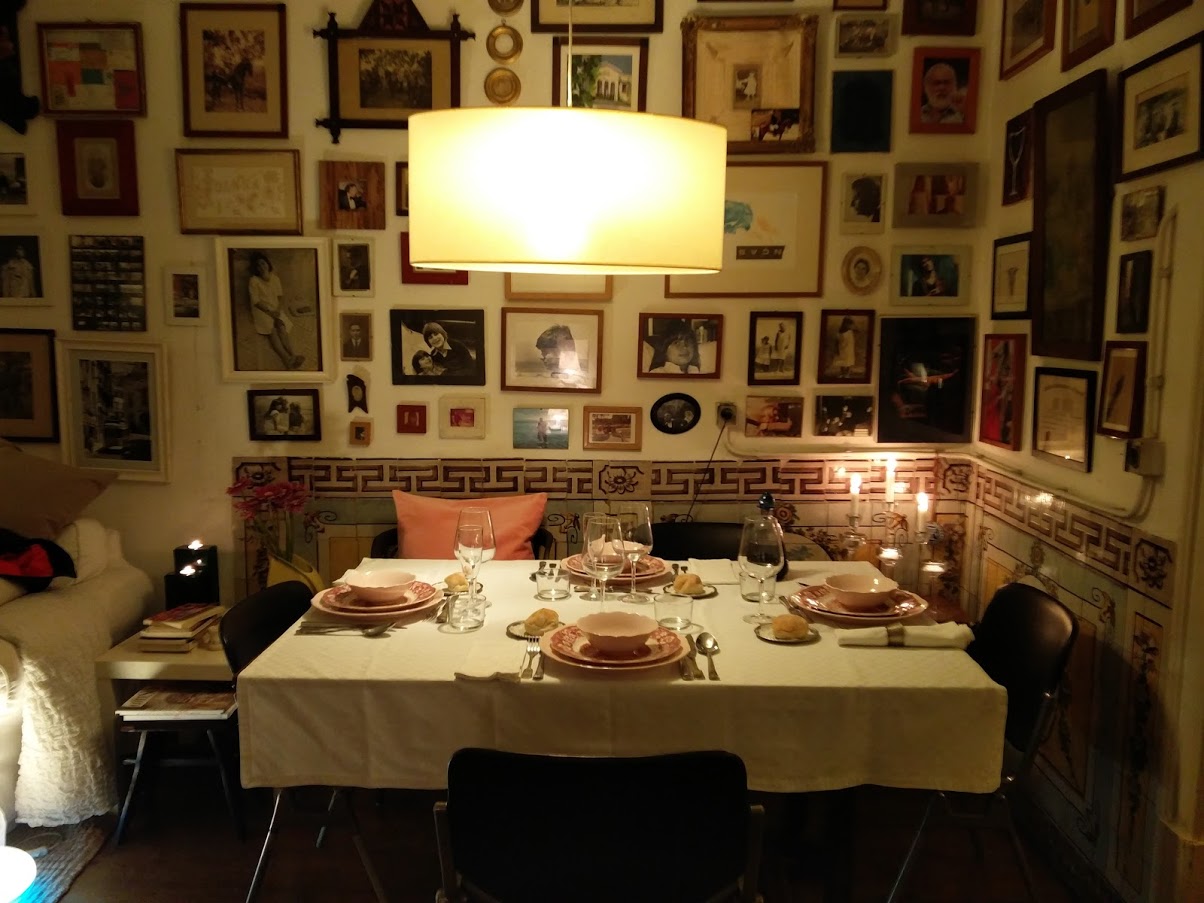PORTUGUESE WINTER DISHES

Do you feel more hungry during winter? It’s natural. On colder days, our body consumes more energy to regulate body temperature.
But anyone who likes to eat knows that this verb is not just a functional act. Those who love to eat do not just do it for food. We also do it for the pleasure of discovering new flavors, new favorites, and, at this time of year, pure comfort.
Portugal’s gastronomy is rich and surprising from north to south of the country, in a perfect marriage between intense flavors of land and sea.
Taste of Lisboa wants to warm you up for the next few days, gathering some of the warmest suggestions that you can enjoy this season.
SOUP

Let’s start with soup, not least because it is the soup that starts most meals in Portugal.
This is, without a doubt, the first dish that the Portuguese really appreciate and don’t give up. Portugal is one of the biggest soup consumers in Europe and in the world and that is why even McDonald’s decided to adopt soup on their menus in Portugal.
Portuguese soups are generally creamy, as they are a mixture of various mashed vegetables, to which you may or may not add other ingredients such as pasta or even ripped cabbage, as is the case with caldo verde. There are also soups based on broths, the most famous being the Alentejo’ açorda, the Alentejo’ gazpacho, or the sopa do cozido (stew soup).
Portuguese soups are rich in nutrients and are the main source of vegetable intake for many Portuguese.
A hot soup can be a meal in itself. Healthy and super comforting!
COZIDO À PORTUGUESA

This dish is considered gastronomic heritage and it fills the stomach of those with the most voracious appetite!
The tradition was born out of the economic need of Portuguese families, sometime in the 17th century, when leftover meals and less noble meats were used, placing them in a pan to cook to improve the flavor. Then, in this meat and sausage cooking broth, a huge variety of vegetables are cooked.
Thus, on the same platter that comes to a table, there is a wide variety of meats, Portuguese sausages, and vegetable, in a feast that lasts hours and leaves few with the desire to eat more that day.
It is a winter dish, like a winter event of traditional Portuguese cuisine and there are real pilgrimages to many restaurants in Lisbon that do not fail to serve the best and most refined versions of this emblematic and affectionate dish since a dose is never just for one.
Our favorite Cozidos à Portuguesa (Portuguese stews) are the one served at Os Courenses, in Alvalade, on Thursdays and Saturdays, and at Tasquinha do Lagarto, in Campolide.
For those who prefer to compose their dish with their favorite ingredients – more beef than pork, more farinheira (Portuguese flour sausage) and less chorizo, more potatoes or more carrots, a lot of rice, more cabbages, fewer beans, all of this and vice versa – Chiringuito, in Campo de Ourique, serves Portuguese stew in a buffet every Sunday, from September to May.
Where to eat Cozido à Portuguesa in Lisbon:
OS COURENSES
Rua José Duro, 27-D, Alvalade
TASQUINHA DO LAGARTO
Rua de Campolide, 258C, Campolide
CHIRINGUITO
R. Correia Teles 31, Campo de Ourique
FEIJOADA À PORTUGUESA

No hunger or cold resists the intense and traditional flavor of this dish. The feijoada à portuguesa (Portuguese bean stew) is also called feijoada à transmontana, because it is from the region of Trás-os-Montes, in the north of Portugal, with the coldest winters in the country, that this recipe comes from.
A creamy broth is filled with red beans, refined with pork, Portuguese sausages, cabbage, tomatoes, potatoes, and carrots. What more can we ask for to comfort us? Maybe white rice to go with it and a walk around Lisbon looking for a winter menu, in any traditional restaurant, that serves it very warm.
Where to eat feijoada à portuguesa in Lisbon:
O TACHADAS
Rua da Esperança 178, Santos-o-Velho
DESPENSA TRANSMONTANA
Calçada do Combro 145, Santa Catarina
AÇORDA

Bread and water, garlic and oil, coriander and egg. At first glance, it seems difficult to believe that this simplicity works, but açorda is one of the simplest and most comforting Portuguese recipes that exist.
It accompanies any protein and it is a sustainable dish since it makes the next day’s bread happy and tasty again, having lost its freshness, and in any Portuguese house, bread is never lacking.
Traditionally the pieces of bread are softened and boiled in water, or a vegetable broth, with chopped garlic, olive oil, and coriander. Everything turns into a creamy porridge to which is added a raw egg, that stirring, boils in the heat of this mixture.
There are açorda recipes that include chips of cooked cod or prawns, but if you prefer to eat a simple bread açorda, you can serve it as a side dish of pork.
Where to eat prawn açorda in Lisbon:
PAP’AÇORDA
Av. 24 de Julho 49, Cais do Sodré
AÇORDA ALENTEJANA
 With the same ingredients as the previous açorda, heading to Alentejo, in the south of Portugal, this açorda recipe is made and served differently.
With the same ingredients as the previous açorda, heading to Alentejo, in the south of Portugal, this açorda recipe is made and served differently.
Traditionally it is served with sliced eve bread, a poached egg, and slices of cod.
Açorda alentejana is considered a soup, but it is in itself a complete meal, flavored with coriander or pennyroyal, an aromatic plant from the mint family, very present in Alentejo gastronomy and known for its benefits in preventing digestive problems and fighting flu and colds.
To learn how to make this açorda and to keep precious tips on Portuguese food, revisit our Live on Instagram, about an Alentejo meal.
Where to eat açorda alentejana in Lisbon:
CACUÉ
R. Tomás Ribeiro 93 C, Saldanha
A TABERNA DO CALHAU
Largo das Olarias 23, Mouraria
PASTÉIS DE BACALHAU COM ARROZ DE TOMATE

Cod cakes (pastéis de bacalhau) are a traditional delicacy that is highly cherished in Portuguese cuisine and are part of the endless universe of cod recipes that Portuguese cuisine so creatively serves.
Very soft on the inside and crispy on the outside, they can be eaten at any time of the day. In winter, the Portuguese cannot resist a plate of freshly fried codfish cakes served with tomato rice.
First things first: these cakes are a mixture of cooked potatoes reduced to puree and chips of cooked and very shredded cod, sautéed in olive oil, onion, and garlic.
This dough is seasoned with pepper and parsley and the shape of each cake is achieved by handling two spoons that form a quenelle, a culinary presentation technique that results in an oval shape with three sides. Each potato and cod quenelle is then fried and served hot, accompanied with tomato rice.
This tomato rice, super comforting and irresistible, we call it arroz malandrinho (naughty rice) served full of broth and flavor.
The recipe uses a Portuguese variety of rice, the Carolino rice, produced on a large scale nationally in the estuaries of the Tagus River (Lisbon), the Sado River (Setúbal), and the Mondego River (Coimbra), that has a small berry which easily absorbs the flavors of the spices added.
Each Portuguese cook has his recipe and his trick when it comes to making cod cakes.
Everyone claims that they cook the best cod cakes and Taste of Lisboa suggests that you start your gastronomic expedition through Baixa, at O Buraco, where you can enjoy a tasty dish of cod cakes. The malandrinho tomato rice only on request for customers of our food & cultural walks.
Where to eat cod cakes with malandrinho tomato rice, in Lisbon:
LAURENTINA – O REI DO BACALHAU
Avenida Conde Valbom, 71A, São Sebastião
O BURACO
R. de Santa Justa 29, Baixa
ARROZ DE POLVO

Another malandrinho rice much appreciated by the Portuguese is octopus rice.
Octopus rice is a frequent presence in many lunches of Portuguese families.
Cooked with carolino rice too, the flavor added to this recipe results from the broth obtained with tomatoes, peppers, onions, garlic, and plenty of coriander.
A precious tip to cook the octopus perfectly, tender and preventing it from getting tough is to pre-cook it over low heat, in a pan, with only a peeled whole onion and no water.
The best result is achieved by cooking it in the very water that the octopus and onion release. It’s ready when the onion is fully cooked.
Where to eat arroz de polvo in Lisbon:
O CANTINHO DO BEM ESTAR
Rua do Norte 46, Bairro Alto
Note: our passion is to share Lisbon and that is why we always try to give you the most updated information. This article was originally written in November 2020, in the middle of a State of Emergency decreed by the Portuguese Government to try to control the pandemic caused by the COVID-19 virus. That is why we advise you to always confirm the times of the recommended establishments before leaving home.
If you like to travel through the food and flavors of each culture, follow our blog Taste of Lisboa to discover the stories and gastronomic culture of Portugal.
We’ll love to see your photo shoots, to know about your insights, suggestions and wishes on your food & culture experiences in Lisbon and Portugal. Please share with us via Facebook, Instagram or Twitter and tag us @tasteoflisboa or #tasteoflisboa.
Feed your curiosity on Portuguese food culture:
The ultimate guide for the best Portuguese soups – PART 1: Vegetarian soups from Portugal
The ultimate guide for the best Portuguese soups – Part 2: Non-vegetarians Soups
The national dish of Portugal (it’s not codfish…)
Set the table – Portuguese essentials
Real people, real food. Come with us to where the locals go.
Signup for Taste of Lisboa’s next natively curated food & cultural experience.
Follow us for more at Instagram, Twitter e Youtube
